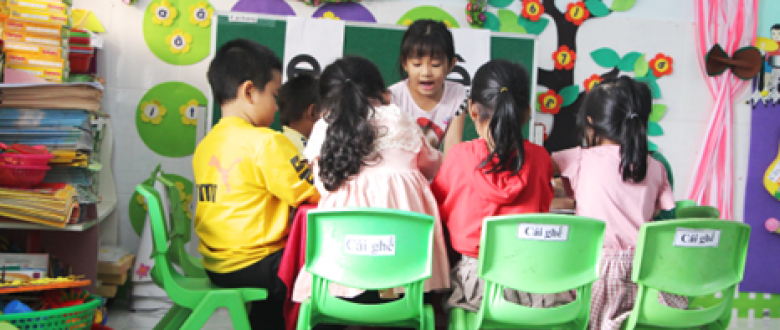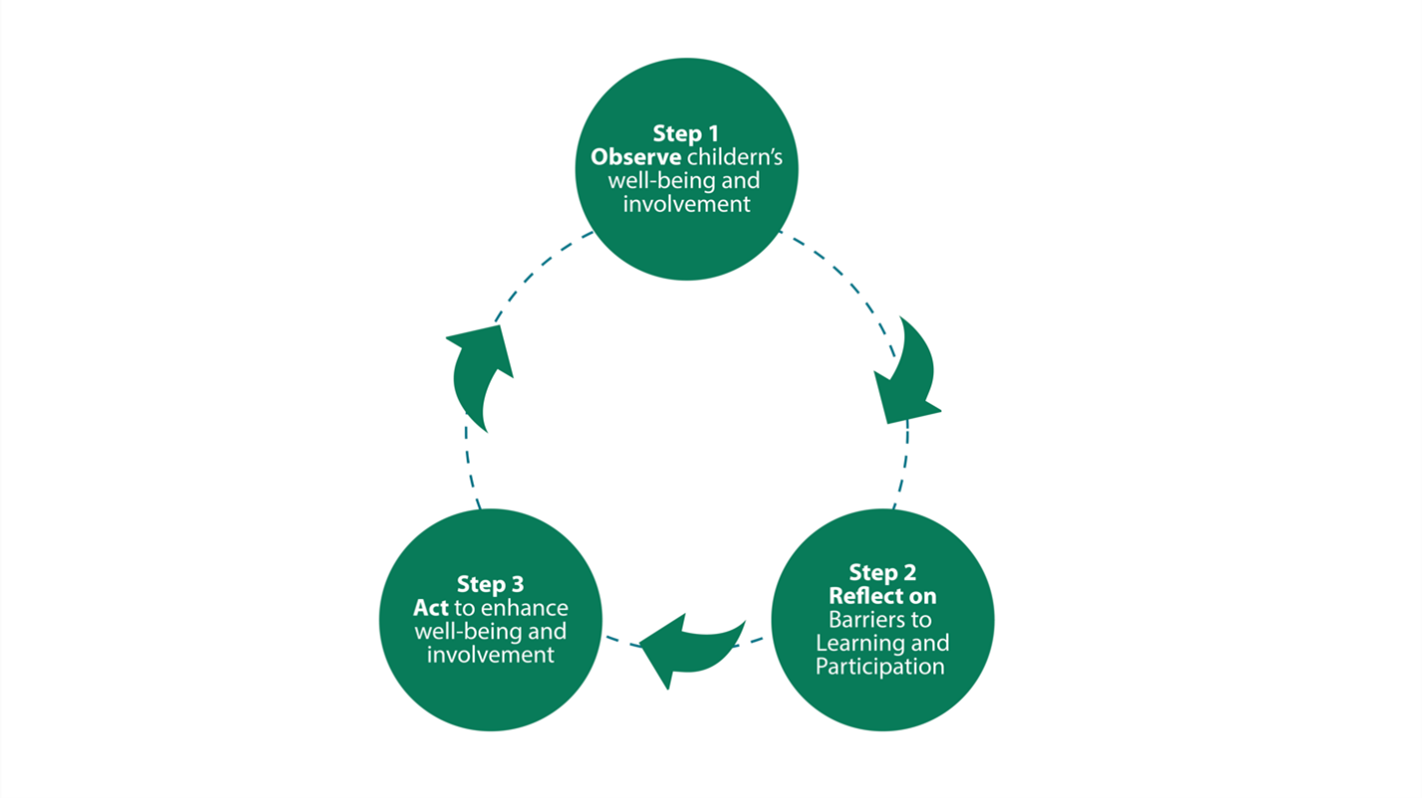
Observing children in the classroom is a widespread practice, especially in Vietnam where it is incorporated as a daily task for teachers. Despite this being part of their routine, many teachers do not know how to do it properly and see opportunities to use this information to inform their teaching practice and enhance the quality of education for the preschool child. Leveraging this teachers' daily task, in 2020, the Early Childhood Education Department (ECED) and the Ministry of Education and Training (MOET) and VVOB jointly developed the “Process-Oriented Child Monitoring (POM) - a practical handbook/guide for preschool teachers”. The POM guide has helped to improve teachers' observation skills by following three simple steps and reflecting on two indicators of learning (well-being and involvement). This systematic method of child observation has improved preschool learning quality for many children in mountainous areas.
The 3 simple steps to observe children and improve child’s learning
The VVOB Impact baseline (2019), using the East-Asia Pacific Early Childhood Development Scale (EAP-ECDS), shows that Kinh children score significantly higher compared to non-Kinh children. The majority of non-Kinh students are in the mountainous regions where, although highly motivated, teachers lack the pedagogical skills to effectively teach these students. By introducing POM as a simple and effective way to observe a child’s well-being and involvement, teachers can support the most disadvantaged populations and contribute to their holistic development.
“I realized that I did not have a clear observation plan, did not know what to observe in children and how to adjust activities to improve the quality of education. After getting trained on POM, It is now clear to me and I have also changed my observation implementation. Children in my classes are becoming happier with class activities and are confident to express their interests to join a play corner” – Ms. Anh Tuyen, preschool teacher from Quang Ngai province.

Photo of children are confidently lead their corner activity
POM contributes to developing a child-centered classroom, where the focus is on creating an enabling environment for learning. This tool provides teachers with the skills and structure necessary to notice each child’s level of well-being in the classroom as well as authentic involvement. POM goes beyond observing if the child is completing a task but rather focuses on if the task is at the right level for the child and if it is engaging for them. By putting the child's well-being and involvement at the center of the observation, teachers can identify areas of attention for each child. Teachers not only know their children better, but they are able to adjust their teaching practices with this information to create more engaging and meaningful activities for the children.
In VVOB’s previous 5-year programme (BaMi) POM was implemented in 196 schools and reached more than 2,500 teachers. The BaMi impact research shows the significant impact of POM on students' socio-emotional learning and teachers' abilities to differentiate for learner's needs in the classroom. Because of this, POM will serve as the foundation for our new 5-year programme, TALK, focused on improving outcomes for ethnic minority students in the mountainous regions. By the end of TALK, POM will have been implemented in 273 schools, reaching nearly 4,000 teachers in the project provinces. At a broader scope, POM has also gained national recognition and support from the ECED head, Mr. Nguyen Ba Minh who has stated that “MOET plans to integrate POM into the child-centered national approach in the period of 2021-2025.” With support at the national level, VVOB will place POM and child-centered learning as the foundation for future projects in Vietnam.




